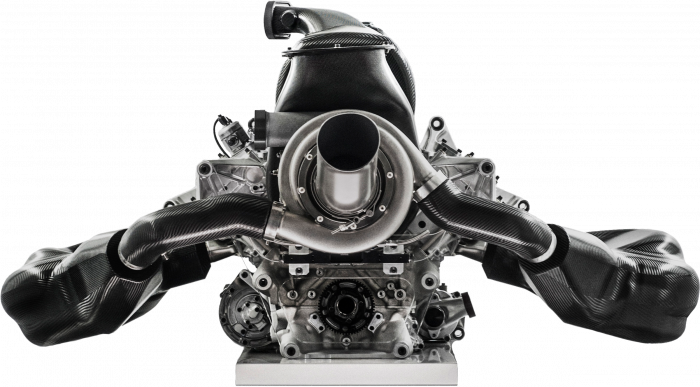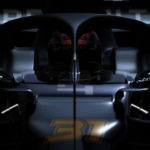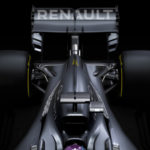Technical Analysis
As Renault enters its fifth season as a constructor, the team is aiming to be ‘the best of the rest’ in 2020 and race winners in 2021 (now 2022). Since the Lotus-take over in 2016, both the team and the factory have undergone a major transformation. With over €50 million spent on the factory, funding technical upgrades to the wind tunnel, new machining centres and much more, every department at the team’s headquarters in Enstone has seen an investment. Naturally, it takes a few years for the progress back at base to filter down to progress at the track. But the team are hoping that its latest contender, the Renault RS20, along with its new driver line-up and new team members, will claim that all important fourth place in the constructor’s championship.
‘The previous years have centred around reconstruction across both facilities and human resources. This phase is now complete and now need to do justice to our ambitions and road map,’ highlights Cyril Abiteboul, Team Principal of Renault F1 Team. ‘2019 was a challenging year, but not without its merits. It provided a reminder of what it takes to succeed in this sport and the high level of competition.’
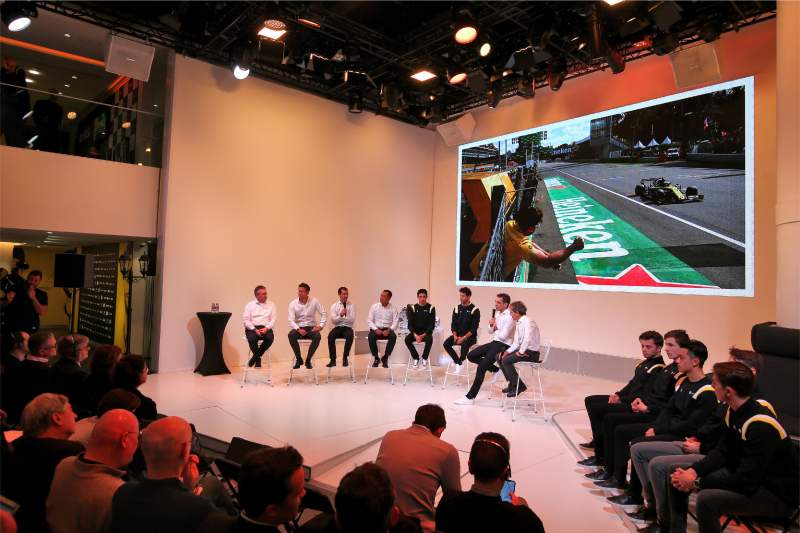
Front Wing
The RS20’s front wing features a few subtle changes when compared to last year’s car, but is overall very similar. The 2nd upper wing element has a very similar shape to that on the RS19, although the inboard tip extends downwards alongside the 3rd element (red). While the inboard tip of this 3rd element is no longer divided into two small ‘fingers’ (orange). The 2nd lower element is still attached to the main plane but features a narrower slot gap (blue).
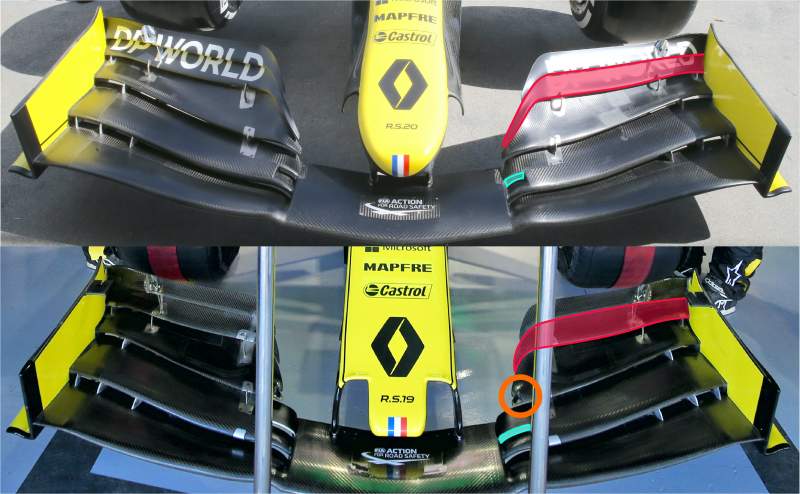
Nose
The nose has seen a major upgrade. Not only is it much narrower, but it is more domed and the tip has an oval shaped profile as opposed to the ‘stepped’ configuration of the RS19’s nose (blue). The front wing is now mounted underneath the nose tip, rather than by the front wing pillars, with the space between the two mounting points much reduced. There has also been the addition of a Mercedes-style cape (red), which extends rearwards from the nose to the assembly of turning vanes just before the bargeboard area.
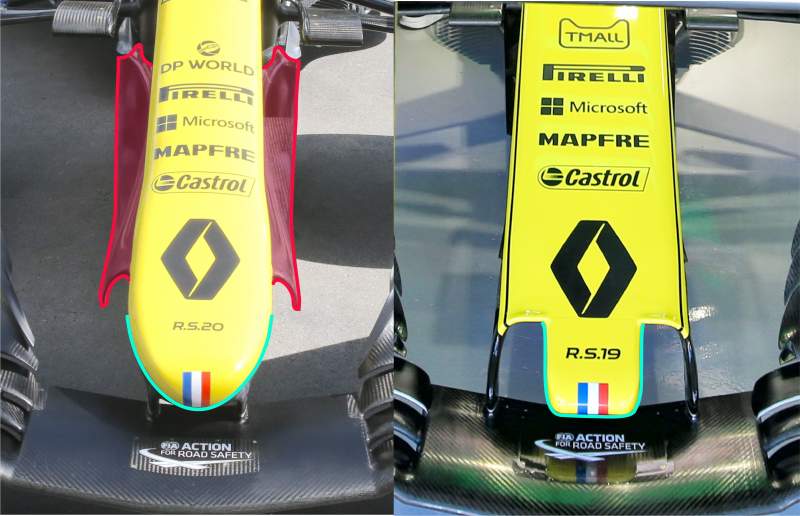
The R.S.20 will run with the E-Tech 20 power unit which has evolved from last year’s concept, with reliability the primary focus. ‘It was important that we made a decent step in performance on the power unit last year,’ says Remi Taffin, Engine Technical Director at Renault F1. ‘Now it’s about delivering that level of performance at each race. Throughout the end of the season we demonstrated this capability. The Monza result is an example of the progression we made on the power unit. There’s little that has changed for 2020 but we aim to integrate the engine into the car as best as possible and therefore making the whole system more efficient.’
